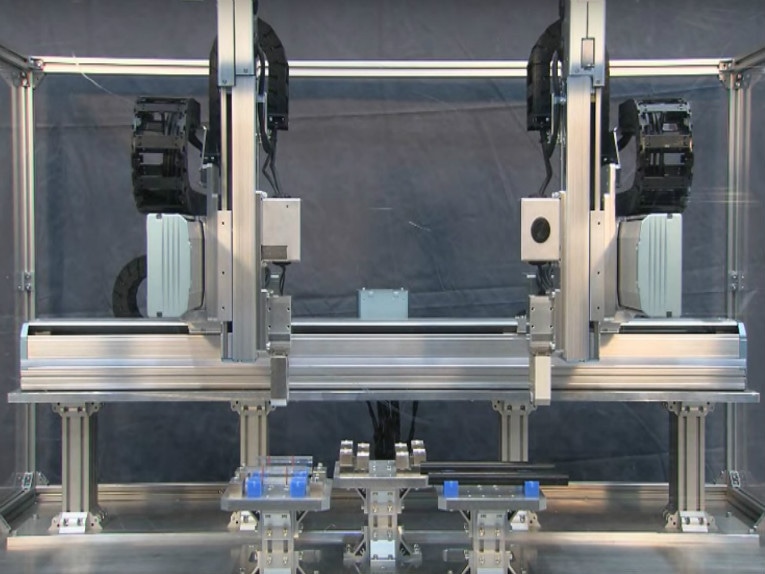Structure, Components, Electronics Wiring, Maintainability.
Bringing together mechanical, electrical, programming, and control engineering is not effortless. But integrating technology advances, and focusing on these five areas, can simplify the process and ensure that mechatronics is made easy.
Today’s fast paced product development cycles and rapid advances in technology have pushed the need for greater cross-disciplined engineering. Where once the mechanical engineer could solely concentrate on the hardware, the electrical engineer on the wiring and circuit boards, and the control engineer on the software and algorithmic programming, the field of Mechatronics brings these areas together creating a focus for a complete motion solution. Advances in, and the integration of all three fields together, streamline mechatronics design.
It is this simplification that is driving advances in robotics and multi-axis Cartesian systems for industrial uses and manufacturing, automation for consumer markets in kiosks and delivery systems, along with the rapid acceptance of 3D printers into mainstream culture.
Here are five key factors that, when put together, result in easier mechatronics design.
1. Integrated linear guides and structure
In machine design, bearing and linear guide assemblies have been around so long, that often the mechanics of a motion system is treated as an afterthought. Advances in materials, design, features, and manufacturing methods, however, make it worthwhile to consider new options
For example, pre-engineered alignment built into parallel rails during the manufacturing process means less cost because of fewer components, greater precision, and fewer variables in play over the length of a rail. Such parallel rails also improve installation because multiple fasteners and manual alignment are eliminated.
In the past it was almost a guarantee that whatever linear guide system an engineer selected, they would also have to consider mounting plates, support rails, or other structures for the needed rigidity. Newer components integrate support structures into the linear rail itself. This shift from individual component design to engineered one-piece designs or integrated sub-assemblies reduces the number of components, while also cutting cost and labor.
2. Power Transmission Components
Selecting the right drive mechanism or power transmission components is also a factor. The selection process, which involves balancing the right speed, torque, and precision performance with the motor and electronics, begins with understanding what results each type of drive can produce.
Much like the transmission in a car operating in fourth gear, belt drives suit applications where top speeds over extended length strokes are required. On the opposite end of the performance spectrum are ball and lead screws that are more like a car with a powerful responsive first and second gear. They offer good torque while excelling at quick starts, stops, and change of direction. The chart shows the differences between the speed of belts and the torque of screws.
Similar to linear rail advances, pre-engineered alignment is another area where lead screw design has advanced to deliver greater repeatability in dynamic applications. When using a coupler, pay attention to the motor and screw alignment to eliminate “wobbling” that reduces precision and life. In some cases, the coupler can be eliminated completely and the screw affixed directly to the motor, merging directly the mechanical and electrical, eliminating components, increasing rigidity and precision, while cutting cost.
3. Electronics and Wiring
Conventional configurations for the electronics in motion control applications include complicated wiring arrangements, along with the cabinets and mounting hardware to assemble and house all of the components. The result is often a system that is not optimized along with being difficult to adjust and maintain.
Emerging technologies offer system advantages by placing the driver, controller, and amplifier directly onto a “smart” motor. Not only is the space needed to house the additional components eliminated, but overall component count is trimmed and the number of connectors and wiring are simplified, reducing potential for error while saving cost and labor.
4. Designed for Manufacturing (DFM)
• Bracketization
Along with easier rail assembly of integrated designs, experience and emerging technologies such as 3D printing increase your ability to create prototype mechatronic and robotic assemblies to DFM standards. For example, custom connector brackets for motion systems have often been costly and time consuming to process through a tool room or fabrication shop. Today, 3D printing lets you create a CAD model, send it to the 3D printer, and have a useable model part in a fraction of the time and at a fraction of the cost.
• Connectorization
Another area of DFM that has already been covered is the use of smart motors that put the electronics directly on the motor, making assembly easier. In addition to this, newer technologies that integrate connectors, cabling, and cable management into one package, simplify assembly and eliminate the need for traditional, heavy, plastic chain type cable carriers.
5. Long Term Maintainability
Newer technologies and advances in design not only affect the up-front manufacturability, but can also influence the ongoing maintainability of a system. For example, moving the controller and the drive onboard the motor simplifies any troubleshooting that may be needed. Access to the motor and electronics is uncluttered and straightforward. Additionally, many systems can now be networked allowing for access from virtually any location to perform remote diagnostics.
Post time: Mar-16-2020








